OSHA Ladder Safety Compliance: General Ladder Rules & Requirements
Are you looking for best practices on the use of ladders in the workplace? Statistics show that workers are more likely to abuse and misuse ladders rather than use them correctly in the workplace.
Ladders are often overlooked as a job site hazard because they’re so commonplace and used every day, or multiple times a day, by employees to perform their job. But, the more often a ladder is used, the higher chance there is for a fall or accident to occur. OSHA ladder safety rules and regulations exist because statistics show that workers are more likely to abuse and misuse ladders rather than use them correctly in the workplace. From 2017-2019, Ladders were #6 on OSHA’s Top 10 Most Cited Violations List.
If you’re in charge of your company’s safety and compliance or oversee the maintenance of your company’s facilities and equipment, then you should be familiar with OSHA 29 CFR 1910.123 Ladder Regulations as they pertain to the general requirements for all ladders, as well as specifics for Portable, Fixed, and Mobile Ladder Stands.
In this article, we’ll summarize the guidelines and standards provided by OSHA for ladders within your facility, as well as discuss best practices for use, inspection, maintenance, and design.
OSHA Ladder Safety: General Requirements and Rules for All Ladders
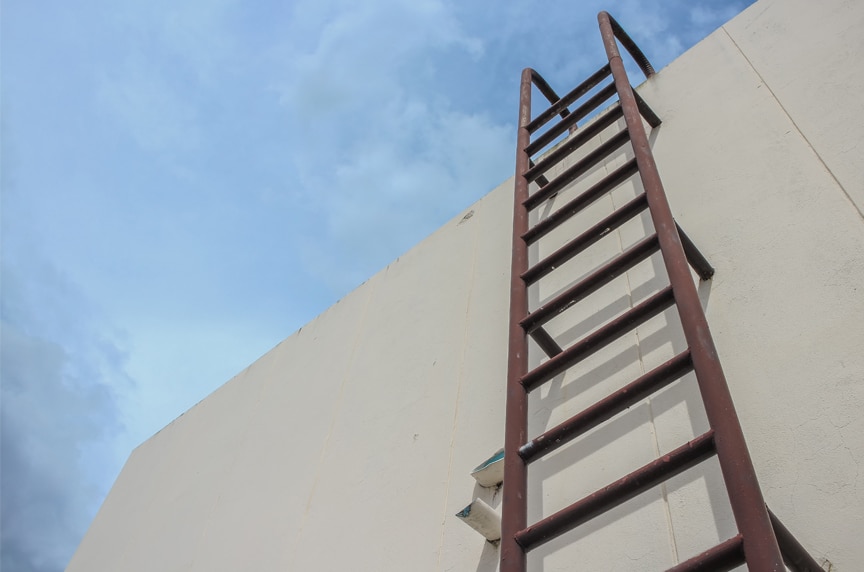
OSHA 1910.23(b) – General Requirements for Ladders and OSHA 3124-12R 2003 Stairways and Ladders – A Guide to OSHA Rules have several guidelines, standards, and best practices for all ladder equipment, related to:
- Safe use and operation
- Inspection
- Maintenance
- Design
- Training
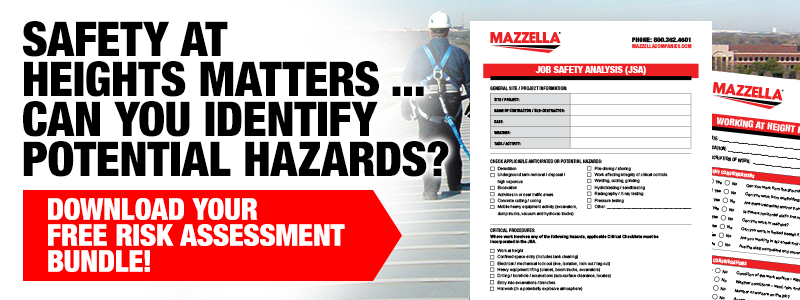
Ladder Safety, Use, and Operation
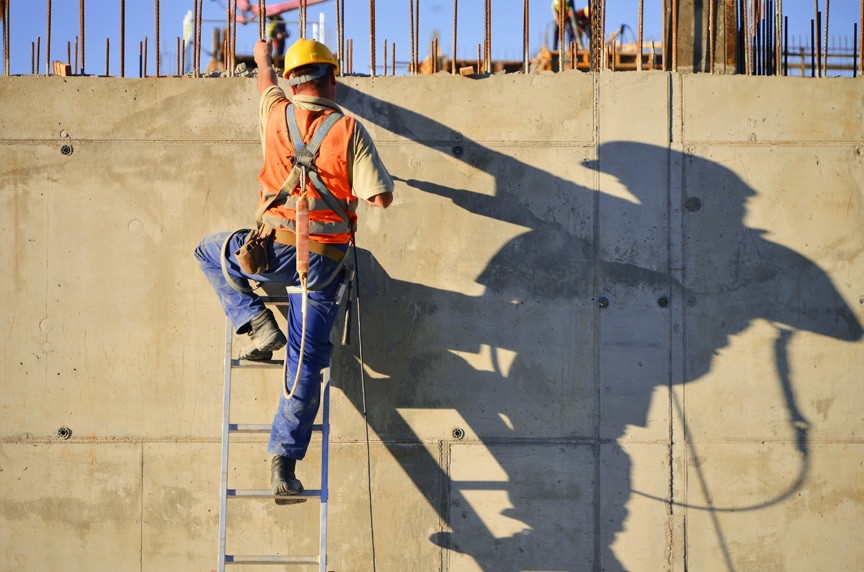
The biggest key to ladder safety is knowing how a ladder can be used safely and effectively. Most ladder accidents can be eliminated if the user understands the environmental hazards nearby. The user should also understand how to properly set up and use a ladder for its intended purpose, including:
- Ladder rungs, steps, and cleats are parallel, level, and uniformly spaced when the ladder is in position for use
- Ladders are used only for the purposes for which they were designed
- Each employee faces the ladder when climbing up or down it
- Each employee uses at least one hand to grasp the ladder when climbing up and down
- No employee carries any object or load that could cause them to lose balance and fall while climbing up or down
- Do not load ladders beyond their maximum intended load nor beyond their manufacturer’s rated capacity
- Use ladders only on stable and level surfaces unless secured or provided with slip-resistant feet to prevent accidental movement. Do not use slip-resistant feet as a substitute for exercising care when placing, lashing, or holding a ladder upon a slippery surface.
- Keep areas clear around the top and bottom of ladders
- Secure ladders placed in areas such as passageways, doorways, or driveways, or where they can be displaced by workplace activities or traffic to prevent accidental movement.
- Use a barricade to keep traffic or activity away from the ladder
- Do not move, shift, or extend ladders while in use
- Use ladders equipped with non-conductive side rails if the worker or the ladder could contact exposed energized electrical equipment
- Ladders must not be tied or fastened together to create longer sections unless they are specifically designed for such use
- Two or more ladders used to reach an elevated work area must be offset with a platform or landing between the ladders, except when portable ladders are used to gain access to fixed ladders
Inspection of Ladder Equipment
Regular inspection of ladders or ladder systems can help identify abnormalities, defects, and hazards that could compromise the equipment or the safety of the user. A Competent Person must inspect ladders for visible defects periodically and after any incident that could affect their safe use.
Below are guidelines for ladder inspection:
- Ladder surfaces are free of puncture and laceration hazards
- Ladders are inspected before initial use in each work shift, and more frequently as necessary, to identify any visible defects that could cause injury
- Any ladder with structural or other defects is immediately tagged “Dangerous: Do Not Use” or with similar language in accordance with § 1910.145 and removed from service until repaired in accordance with § 1910.22(d), or replaced
Maintenance of Ladder Equipment
Ladders should be properly maintained during the course of their service life to ensure that they’re in proper working condition and safe for workers to use.
Below are guidelines for ladder maintenance:
- Maintain ladders so that they’re free of oil, grease, and other slipping hazards
- Wooden ladders are not coated with any material that may obscure structural defects—except for identification or warning labels—to be placed only on one face of a side rail
- Metal ladders are made with corrosion-resistant material or protected against corrosion
Design of Ladder Equipment

OSHA has general requirements that cover the design specifications for rungs and steps used on ladders and stepstools.
- Ladder rungs, steps, and cleats are spaced not less than 10” and not more than 14” apart—measured between the centerlines of the rungs, cleats, and steps, except:
- Ladder rungs and steps in elevator shafts must be spaces not less than 6” apart and not more than 16.5” apart—measured along the side rails
- Fixed ladder rungs and steps on telecommunication towers must be spaced no more than 18” apart—measured between the centerlines of the rungs or steps
- Steps on stepstools are spaced not less than 8” apart and not more than 12” apart—measured between the centerlines of the steps
- Ladder rungs, steps, and cleats have a minimum clear width of 11.5” on portable ladders and 16” (measured before installation of ladder safety systems) for fixed ladders, except:
- The minimum clear width does not apply to ladders with narrow rungs that are not designed to be stepped on, such as those located on the tapered end of orchard ladders and similar ladders
- Rungs and steps on manhole entry ladders that are supported by the manhole opening must have a minimum clear width of 9”
- Rungs and steps on rolling ladders used in telecommunication centers must have a minimum clear width of 8”
- Stepstools have a minimum clear width of 10.5”
- When splicing side rails, the resulting side rail must be equivalent in strength to a one-piece side rail made of the same material
- Ladder components must be surfaced to prevent snagging of clothing and injury from punctures or lacerations
Safety Training on Ladder Hazards

Employers must train all their employees so they’re able to recognize hazards related to ladders and stairways and instruct them on how to minimize these hazards.
These are some examples of topics that might be covered in a ladder or stairway training:
- Nature of fall hazards in the work area
- Correct procedures for erecting, maintaining and disassembling the fall protection systems to be used
- Proper construction, use, placement, and care in handling of all stairways and ladders
- Maximum intended load-carrying capacities of ladders used
OSHA does require employers to retrain each employee as necessary to maintain their understanding and knowledge on the safe use and construction of ladders and stairs.
Wrapping it Up
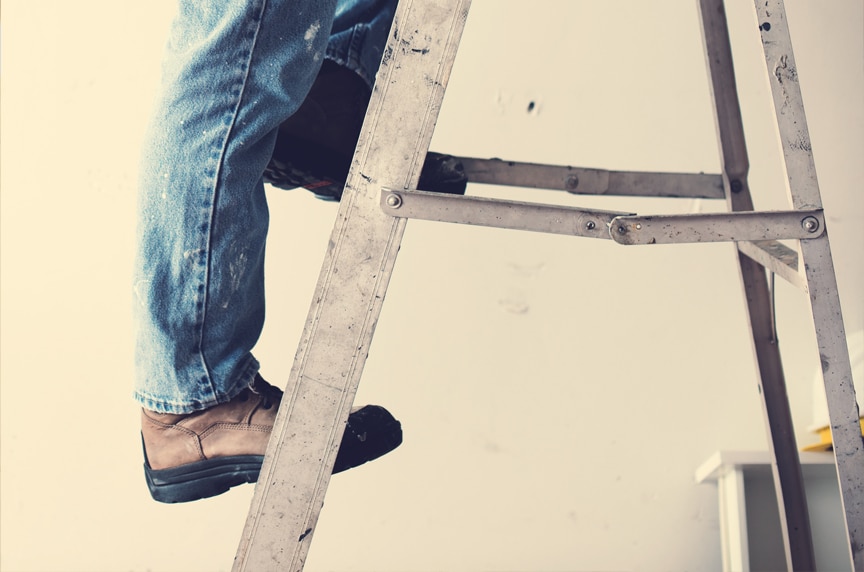
When used properly, and used only for the purpose for which they were originally designed, ladders are an excellent tool that can make a job easier to perform.
Remember that ladder safety starts before a worker even steps foot on one. Louisville Ladder promotes the C.L.I.M.B. acronym to help promote ladder safety:
C – Choose the right equipment
L – Look for damage or missing parts
I – Implement a safe setup routine
M – Move safely, always using 3 points of contact
B – Be a climbing safety expert, not a statistic
At Mazzella, we provide a number of fall protection solutions for companies who have workers at height. We offer personal fall protection including harnesses, lanyards, and retractables. We also can design, engineer, and install engineered lifeline systems and rigid rail systems.
If you need a fall protection solution, or need fall protection training for your team of employees, please don’t hesitate to reach out to schedule a consultation.
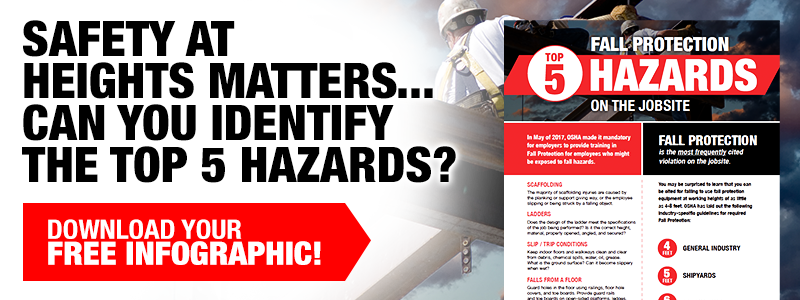
Copyright 2019. Mazzella Companies.
